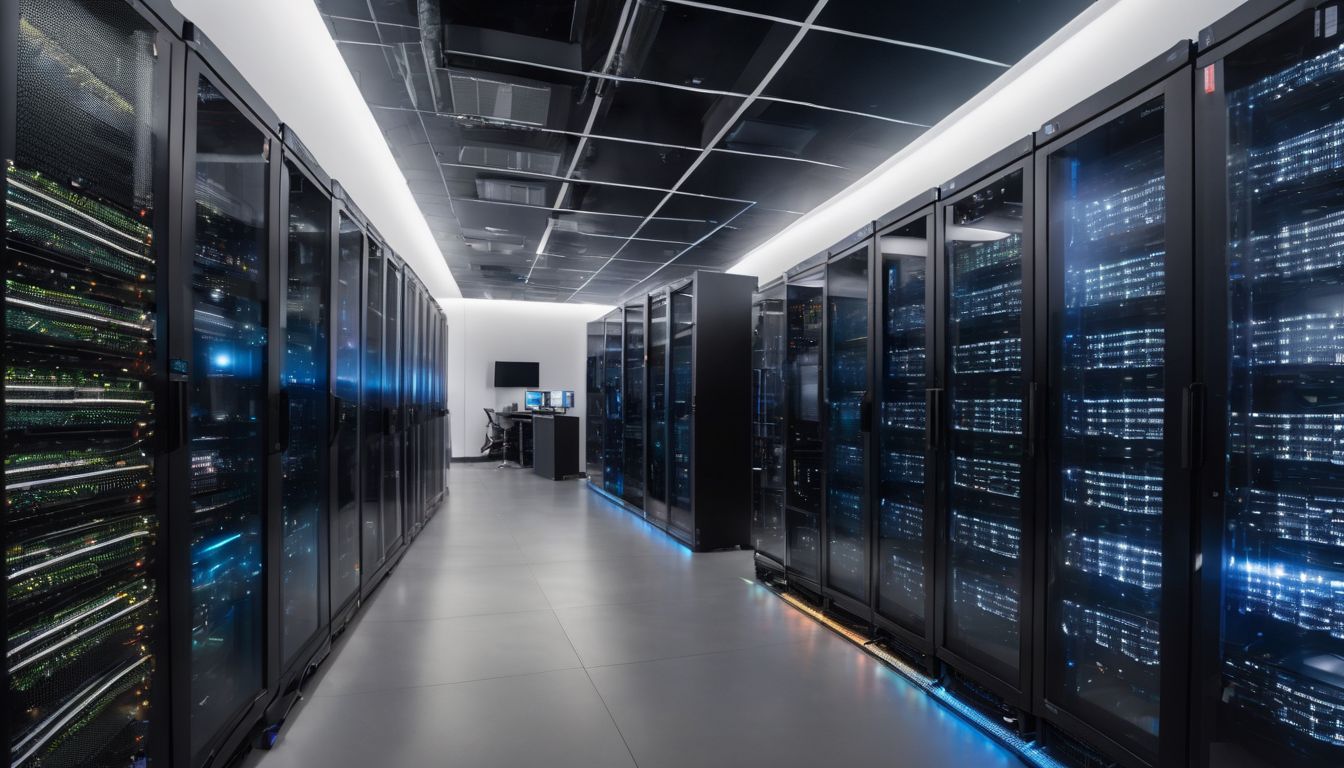
Keeping personal information secure is a growing concern in a world where our lives are increasingly digital. In 2024, cyber threats will not only become more sophisticated but also more widespread across various technologies. The increasing dependency on technology, especially IoT, creates new and evolving cyber threats. This article explores the future of online security, arming you with knowledge to protect your family and your data effectively. Stay informed on how to shield your digital life from emerging dangers.
Current Landscape of Online Security
The online security landscape constantly evolves, with cyber-attacks becoming increasingly sophisticated and targeting a diverse range of industries. Nation-state actors also play a significant role in these attacks, while supply chain vulnerabilities pose additional challenges.
Increasing Sophistication of Cyber Attacks
Hackers constantly find new ways to breach our online safety, making cyber attacks more complex and harder to detect. They’re not just going after big companies; they can target anyone with an internet connection – you, office workers, and parents alike.
We used to worry mostly about virus-infected emails. Still, threats now come from all directions, including social media scams, fake websites set up for stealing information (known as phishing), and even compromising the smart devices we rely on at home.
Cybercriminals are becoming smarter by using artificial intelligence (AI) to create attacks that adapt and learn how to get past security defences. This means it’s tougher than ever for individuals and businesses to protect their data.
Everyone must stay vigilant – update software regularly, use strong passwords, and never click on suspicious links. As these dangers escalate in complexity, so must our strategies in defending against them. Given these risks, we see a growing need for diverse attack vectors.
Diverse Attack Vectors
Cybercriminals employ diverse attack vectors, targeting vulnerabilities across various platforms and technologies. By strategically exploiting weak points in systems and networks, they aim to gain unauthorised access and cause disruption.
This poses a significant threat to data security and privacy protection, making it essential for individuals and organisations to stay vigilant against evolving cyber threats. With the increasing complexity of these attack methods, understanding cybersecurity trends is crucial for mitigating risks associated with phishing attacks, digital fraud, and identity theft.
Adopting proactive measures such as multi-factor authentication and staying informed about emerging technologies can help bolster defences against these diverse attack vectors. Additionally, fostering a culture of cybersecurity awareness among employees can play a critical role in safeguarding against potential breaches.
Targeting a Variety of Industries
Cyber attacks are increasingly targeting a diverse range of industries, leading to amplified concerns about online security. This trend highlights the need for robust cybersecurity measures across various sectors, including healthcare, finance, and manufacturing. As the threat landscape evolves, businesses and organisations must stay vigilant and implement proactive strategies to safeguard their digital assets from potential cyber threats.
These industry-specific cyber attacks signify the importance of tailored security solutions that address the unique challenges faced by different sectors. With nation-state actors actively participating in cyber warfare and supply chain attacks becoming more prevalent, businesses must prioritise implementing comprehensive security measures to protect their sensitive data and maintain operational resilience.
Involvement of Nation-State Actors
Nation-state actors play a significant role in shaping the cybersecurity landscape, impacting various industries and individuals. With geopolitical impacts influencing cyber threats, these state-sponsored actors can launch sophisticated attacks that pose substantial risks to online security.
The involvement of nation-states introduces complex challenges that demand awareness and proactive strategies for protecting against evolving cybercriminal tactics, emphasising the importance of staying vigilant in safeguarding digital assets and personal information.
Supply Chain Attacks
Amid the involvement of nation-state actors, supply chain attacks have emerged as a significant threat in the cybersecurity landscape. These attacks involve infiltrating and compromising the software or hardware within a company’s supply chain, potentially impacting numerous organisations downstream.
As cybercriminals continue to exploit vulnerabilities at various points in the supply chain, it becomes crucial for businesses and individuals to stay vigilant and implement rigorous security measures.
The implications of supply chain attacks are far-reaching, affecting not just individual companies but entire industries and their consumers. With increasing reliance on interconnected networks and digital systems, safeguarding the integrity of every link in the supply chain is paramount to thwarting potential cyber threats.
The Future of Online Security: Top 20 Emerging Trends for 2024
Automotive cybersecurity threats, AI in cybersecurity, mobile device vulnerabilities, cloud security challenges and solutions, persistent data breaches, IoT security in the 5G era.
Automotive Cybersecurity Threats
Automotive cybersecurity threats are a growing concern as vehicles become increasingly connected. Integrating advanced technologies in modern cars brings the risk of cyber attacks targeting vehicle systems, compromising safety and privacy.
As more vehicles rely on internet connectivity and automation, the potential for malicious exploitation by cybercriminals rises, emphasising the need for robust security measures to protect against automotive cybersecurity threats.
The future implications of emerging technologies on automotive cybersecurity are significant. With the rise of connected vehicles and smart transportation systems, ensuring secure communication protocols within automobiles is crucial to prevent unauthorised access and potential manipulation by cyber attackers.
Utilisation of AI in Cybersecurity
AI is set to revolutionise cybersecurity, enhancing threat detection and prevention capabilities. Machine learning algorithms can analyse vast amounts of data in real time, identifying potential security threats more accurately.
Using AI, cybersecurity professionals can stay ahead of emerging cyber attacks and swiftly respond to evolving threats, ultimately bolstering the overall security posture. Moreover, using AI and machine learning technologies allows one to automate routine security tasks while enabling proactive measures against potential vulnerabilities.
With these advancements, the future of cybersecurity looks promising as organisations aim to combat increasingly sophisticated cyber threats. Embracing AI in cybersecurity is crucial for staying resilient against evolving online security risks.
Mobile Devices as a Target
Next, cyber attackers are increasingly targeting mobile devices due to their widespread use and the amount of sensitive data they hold. Securing these devices has become critical with the increasing reliance on smartphones and tablets for work, communication, and personal tasks.
AI-powered threats can potentially exploit vulnerabilities in mobile operating systems, making it crucial for users to stay informed about emerging cyber risks. As a result, biometric authentication and data encryption advancements are being developed to safeguard personal information stored on mobile devices.
Individuals and companies must remain vigilant about protecting their mobile devices from evolving cybersecurity threats.
Challenges and Solutions in Cloud Security
Cloud security poses challenges and opportunities as we navigate the evolving online security landscape. With increasing global cloud spending, businesses must address data protection and secure access management concerns. Implementing robust authentication measures and comprehensive encryption solutions is vital in safeguarding sensitive information from potential breaches or cyber-attacks.
Moreover, proactive monitoring for early threat detection is imperative to mitigate risks associated with cloud vulnerabilities. Embracing AI technologies to enhance real-time threat intelligence can significantly fortify cloud security.
Persistent Issue of Data Breaches
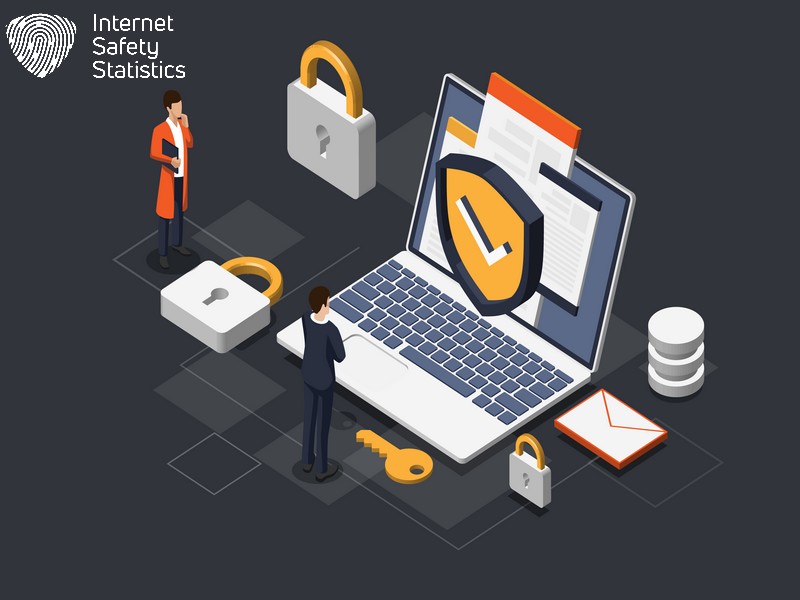
Data breaches remain a persistent concern in the ever-evolving landscape of online security. Cyber attackers continually exploit vulnerabilities in various industries, making data breaches a prevalent threat.
With the increasing reliance on digital platforms and technology, safeguarding personal and sensitive information from unauthorised access is crucial. Embracing multi-factor authentication and real-time monitoring for early threat detection can help mitigate the risk of data breaches.
Leveraging AI for enhanced security and implementing zero-trust security models are vital steps towards fortifying defences against cyber threats. As internet users, prioritising identity and access management alongside embracing automation can significantly contribute to protecting against potential data breaches.
IoT Security in the Era of 5G
The era of 5G brings with it a heightened need to ensure the security of IoT devices. With the increased speed and connectivity of 5G networks, IoT devices are more vulnerable to cyber threats.
It is essential to prioritise securing these connected devices as they become an integral part of our daily lives, from smart homes to healthcare and transportation systems. As we embrace the potential benefits of 5G technology, safeguarding IoT devices against cyber-attacks becomes paramount.
Security for IoT devices in the age of 5G is crucial due to the vast array of personal and sensitive data that these interconnected devices collect and transmit. Cybersecurity advancements must keep pace with the rapid evolution of network technologies to ensure that IoT users remain protected against emerging cyber threats, thereby maintaining trust in this interconnected ecosystem.
Embracing Automation for Improved Security
Utilising automation in security processes is crucial for enhancing online protection. Implementing automated threat detection systems, such as those powered by artificial intelligence (AI), can significantly bolster defences against evolving cyber threats.
By embracing automation, organisations can proactively identify and respond to potential security breaches, ensuring a robust shield against cyber attacks. Moving forward to the “Rise of targeted ransomware attacks,” businesses must remain vigilant against emerging cyber threats.
Rise of Targeted Ransomware Attacks
Amid the increasing sophistication of cyber threats, the rise of targeted ransomware attacks is a grave concern. The use of artificial intelligence (AI) and machine learning (ML) technologies has emboldened cybercriminals to launch focused ransomware assaults, making data at home or work vulnerable to exploitation.
As a result, internet users, office workers, and parents alike must stay informed about these emerging threats and take proactive measures to safeguard their digital assets with cybersecurity tools like multi-factor authentication and real-time threat monitoring. Cybersecurity professionals are advocating for heightened vigilance in light of this escalating risk.
Escalation of State-Sponsored Cyber-Warfare
As we brace ourselves for the rise of targeted ransomware attacks, it is important to recognise the escalating threat of state-sponsored cyber warfare. The future landscape of online security may see increased cyber attacks orchestrated by nation-state actors, posing significant risks to businesses and individuals.
This trend demands heightened vigilance and proactive measures to safeguard against breaches and data compromises. The use of artificial intelligence (AI) for cyber threat detection can be a powerful tool in mitigating these threats, offering a proactive defence against state-sponsored cyber warfare.
The escalation of state-sponsored cyber warfare warrants a collective effort from cybersecurity professionals and internet users to stay ahead of emerging threats. By embracing technologies such as AI for threat detection and maintaining awareness about potential vulnerabilities, individuals can contribute towards strengthening online security in the face of escalating state-sponsored cyber threats.
Mitigating Insider Threats Through Awareness
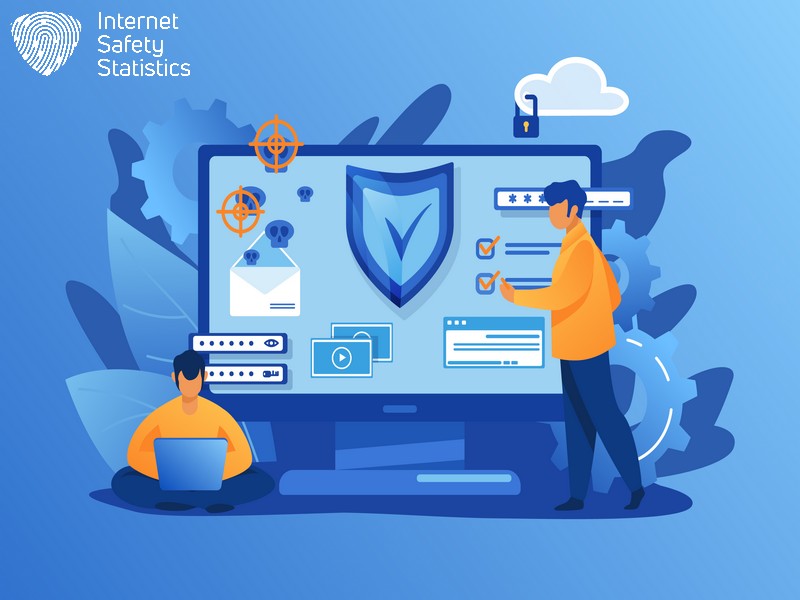
The escalation of state-sponsored cyber warfare to Mitigate insider threats through awareness represents a crucial shift in cybersecurity focus. Understanding the significance of internal risks and the potential impact on organisational security is imperative for everyone.
As AI and machine learning evolve, awareness about insider threats becomes paramount. Security training and proactive measures are essential in mitigating these risks effectively while minimising potential harm to sensitive data and critical infrastructure.
The importance lies in recognising that insider threats can stem from any individual within an organisation, making it critical for all employees to be well informed. Emphasising each person’s role in maintaining a secure environment is key, as staying vigilant against potential internal risks is fundamental to cybersecurity preparation.
Addressing Challenges in Remote Work Environments
Remote work has introduced new cybersecurity challenges, emphasising the need for strong security measures. AI and machine learning technologies can aid in threat detection, with zero-trust architecture as a crucial defence against cyber threats.
As remote work becomes more prevalent, it is essential to prioritise secure access and data protection. Additionally, implementing multi-factor authentication can bolster security for remote workers. Embracing these solutions will safeguard sensitive information and mitigate cyber risks.
Looking ahead at the future implications of online security trends, it is crucial to understand the impact of emerging technologies on cybersecurity practices.
Combating Social Engineering Attacks
Transitioning from addressing challenges in remote work environments, it’s crucial to recognise the significance of combating social engineering attacks. With the increasing sophistication of cyber threats, including targeted ransomware attacks and state-sponsored cyber warfare, individuals and organisations must proactively safeguard against social engineering tactics.
By enhancing security with multi-factor authentication and ensuring continuous awareness to mitigate insider threats, internet users can better defend themselves against evolving cyber threats that positively impact online security efforts.
Enhancing Security with Multi-Factor Authentication
Multi-factor authentication, or MFA, adds an extra layer of security by requiring multiple verification forms to access an account. This can include a password, a fingerprint scan, or a unique code sent to your phone.
By implementing MFA, you significantly reduce the risk of unauthorised access, even if one form of authentication is compromised. With the increasing sophistication of cyber-attacks and diverse attack vectors, adopting multi-factor authentication is crucial in safeguarding sensitive information and personal data from potential breaches.
Integrating multi-factor authentication into everyday online activities helps to enhance security without creating unnecessary complexity for users. By utilising this approach, individuals can proactively protect their digital identities while contributing to a safer online environment for everyone.
Fending-Off International Attacks
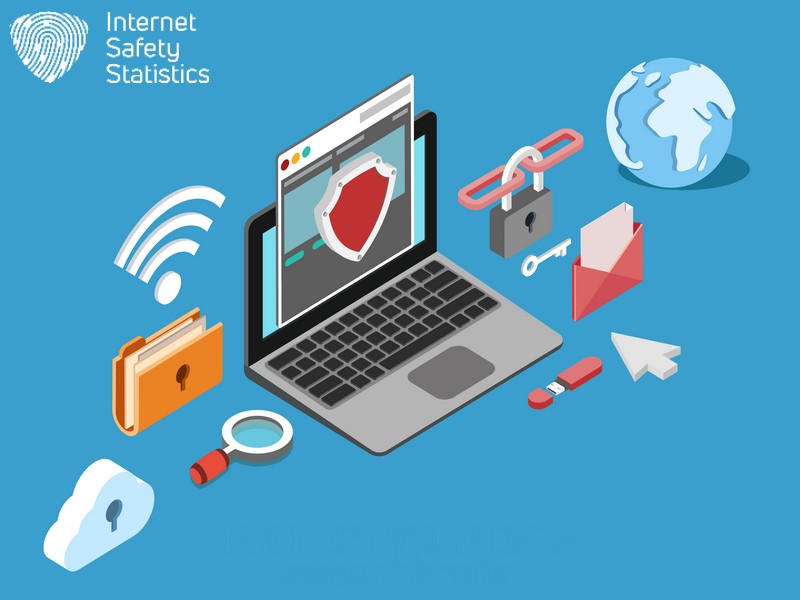
Enhancing security with multi-factor authentication ensures layered protection for online accounts. International attacks present a constant threat, targeting sensitive data and critical infrastructure. It is imperative to stay vigilant and prioritise global collaboration in sharing threat intelligence to combat these sophisticated attacks. AI and real-time monitoring aid in the early detection of international cyber threats, enabling proactive defence measures against evolving attack vectors.
Additionally, implementing zero-trust security models can bolster defences against foreign entities attempting unauthorised access to networks or systems.
Strengthening Identity and Access Management
Strengthening identity and access management is crucial to fend off international attacks. Organisations must prioritise the implementation of multi-factor authentication to bolster their security measures.
Additionally, real-time monitoring for early threat detection should be embraced to stay ahead of potential breaches. By leveraging these strategies, businesses can ensure that only authorised personnel have access to sensitive data and systems, significantly reducing the risk of unauthorised breaches.
Furthermore, embracing automated threat hunting can play a pivotal role in identifying suspicious activities related to identity and access management. This proactive approach allows for swift action against potential threats before they escalate into full-blown security incidents or data breaches.
Real-Time Monitoring for Early Threat Detection
Strengthening identity and access management is crucial, but real-time monitoring for early threat detection is equally important. Leveraging artificial intelligence and machine learning technologies will be key in identifying potential security breaches before they escalate. Implementing AI-powered tools to monitor networks and systems constantly can provide valuable insights into emerging threats, allowing proactive measures to be taken swiftly.
Ensuring the safety of online activities will demand advanced security technologies like real-time monitoring for early threat detection. With the increasing sophistication of cyber attacks, staying one step ahead through proactive surveillance is vital.
Securing Connected Vehicles
The future of online security will involve addressing the unique challenges posed by securing connected vehicles. As technology advances, integrating smart features in vehicles opens up potential vulnerabilities that cybercriminals may exploit. Protecting these interconnected systems will require innovative cybersecurity measures to safeguard against unauthorised access and protect sensitive data transmitted within and “to-and-fro” the vehicle network.
Utilising AI and machine learning technologies can aid in developing robust defence mechanisms for connected vehicles, enabling proactive threat detection and rapid response capabilities.
Leveraging AI for Enhanced Security
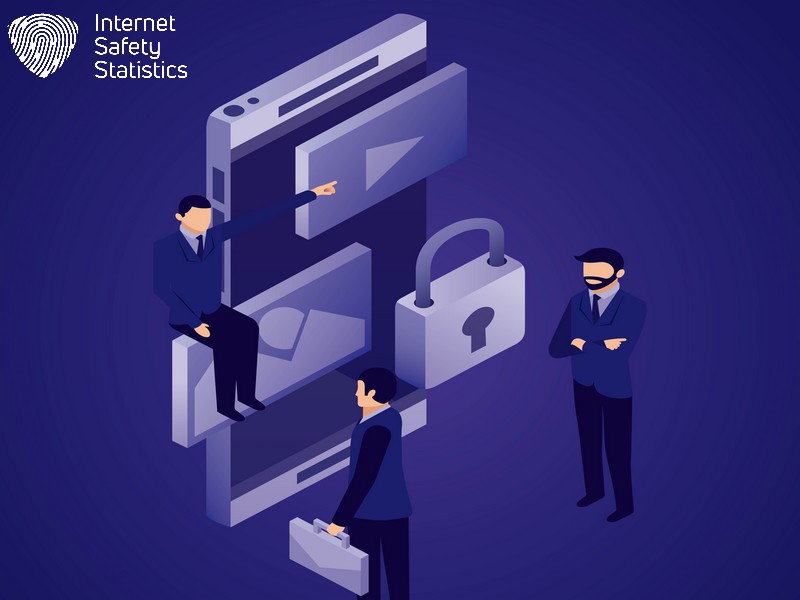
In the evolving cybersecurity landscape, leveraging artificial intelligence (AI) holds promise in enhancing security measures and fending off emerging threats. Implementing AI and machine learning technologies is anticipated to play a pivotal role in threat detection and mitigation, aiding in staying ahead of cybercriminals’ rapidly advancing tactics.
As AI continues to evolve, it is set to become a critical tool in fortifying security for IoT devices, mitigating insider threats through real-time monitoring, and strengthening identity and access management.
AI-driven security solutions ensure robust protection against sophisticated cyber attacks targeting various industries. By harnessing the power of AI, organisations can establish proactive defence strategies against potential vulnerabilities and safeguard sensitive digital assets from evolving online threats like zero-day attacks or ransomware incidents.
Ensuring Security for IoT Devices
Leveraging AI for enhanced security sets the stage for addressing the critical need to ensure security for IoT devices. As we move into an era dominated by 5G connectivity, it becomes imperative for both individuals and organisations to prioritise safeguarding the increasing number of interconnected devices in our environment. With IoT devices permeating various aspects of our lives, from smart homes to healthcare and industrial applications, comprehensive security measures are essential.
As IoT devices continue to evolve and become more integrated into everyday life, maintaining their security will be crucial in protecting sensitive personal data and preventing potential cyber threats that may exploit vulnerabilities within these interconnected systems.
Evolving Cloud Security Measures
Cloud security measures are evolving rapidly to adapt to the increasing sophistication of cyber threats. Artificial intelligence and machine learning technologies are key in detecting and preventing cloud security breaches. Internet users and office workers must stay informed about the latest advancements in cloud security to protect their online data from potential cyber-attacks.
Many parents, office workers, and internet users recognise the importance of staying ahead of evolving cloud security measures. The constant development of new strategies and technologies reflects the dynamic nature of online security, requiring proactive awareness from individuals and organisations.
Upcoming Cybersecurity Trends
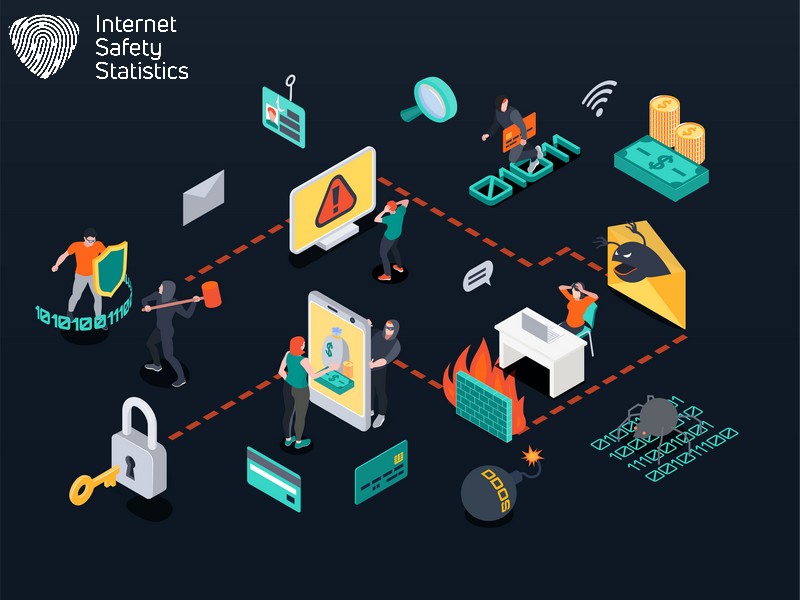
Implementing AI and ML in cybersecurity and utilising zero-trust security models to enhance overall protection are on the rise. Quantum computing-resistant cryptography is also becoming increasingly important in safeguarding sensitive data.
Implementation of AI and ML in Cybersecurity
AI and machine learning technologies revolutionise cybersecurity, providing advanced threat detection and prevention capabilities. These technologies analyse vast amounts of data in real time to swiftly identify potential security risks, allowing for proactive measures against cyber attacks.
Integrating AI and ML equips cybersecurity teams with powerful tools to stay ahead of evolving threats, offering a proactive approach to safeguarding online assets. By harnessing the potential of these innovative technologies, organisations can enhance their overall security posture and mitigate the impact of sophisticated cyber attacks. Incorporating AI and ML into cybersecurity strategies empowers professionals to efficiently detect and respond to emerging threats, ensuring a robust defence against rapidly evolving cyber risks.
Utilisation of Zero-Trust Security Models
Zero-trust security models are gaining attention as an effective approach to cybersecurity. This model adopts a strict verification process for every user and device trying to access the network, regardless of location or context. By continuously verifying identity and requiring explicit permission, zero trust security significantly reduces the risk of unauthorised access and potential breaches.
Implementing zero-trust security models can help mitigate cyber threats and protect sensitive information from possible attacks. This approach ensures that even if one part of the network is compromised, other parts remain secure, making it an essential strategy in safeguarding against evolving cyber threats.
Quantum Computing-Resistant Cryptography
Quantum computing-resistant cryptography will be crucial to online security in the future. As quantum computers evolve, the risk they pose to traditional encryption methods grows. Quantum-resistant cryptography is designed to withstand attacks from powerful quantum computers, ensuring that sensitive data remains secure. This type of encryption will safeguard personal and business information from emerging cyber threats. Office workers, internet users, and parents should familiarise themselves with quantum computing-resistant cryptography, which will play a vital role in protecting their digital assets.
Evolution of Cloud Security

Cloud security is rapidly evolving to meet the growing demand for safeguarding data and applications in cloud environments. Significant advancements are being made to protect sensitive information from cyber threats. AI and machine learning are key in strengthening cloud security by enabling proactive threat detection and rapid response capabilities, ensuring robust defence mechanisms against emerging risks.
With an increasing emphasis on real-time monitoring and early threat identification, cloud security measures are continuously adapting to address the evolving cybersecurity landscape, providing users with greater confidence in the safety of their digital assets. As part of upcoming cybersecurity trends, the evolution of cloud security remains pivotal in mitigating potential risks associated with storing and accessing data on cloud platforms.
Security Challenges Posed by 5G Networks
5G networks present significant security challenges due to their high-speed, low-latency capabilities. These networks are vulnerable to potential attacks, such as distributed denial of service (DDoS) and man-in-the-middle attacks, which could have widespread implications for personal data and critical infrastructure.
As 5G enables more connected devices, it also expands the attack surface for cyber threats. Securing these networks will require robust encryption protocols and enhanced authentication methods to mitigate the risks associated with this advanced technology.
The proliferation of 5G networks introduces unique considerations for online security, demanding heightened vigilance from users and organisations alike. Integrating AI-powered cybersecurity measures may play a pivotal role in safeguarding against the evolving threat landscape posed by 5G connectivity.
Ensuring IoT Security
Securing IoT devices against cyber threats is crucial for protecting personal and business data. With the increasing use of smart devices in homes and workplaces, it’s essential to take proactive measures to ensure security.
Implementing strong passwords, regularly updating firmware, and using reputable security software can help safeguard IoT devices from potential vulnerabilities. Staying informed about the latest security best practices and being cautious about connecting new devices to networks are key steps to protecting against potential cyber threats.
As IoT permeates various facets of daily life, understanding the importance of securing these interconnected devices becomes paramount. Being diligent in implementing security measures for IoT devices is vital for maintaining a safe online environment and safeguarding sensitive information from potential cyber risks such as unauthorised access or data breaches.
Strengthening Supply Chain Security
Organisations are focusing on strengthening supply chain security to ensure the security of online transactions and data. Supply chain threats can jeopardise sensitive information’s integrity and confidentiality. Therefore, it is essential to implement robust measures such as real-time monitoring for early threat detection, ensuring secure connected vehicles, and leveraging AI for enhanced security solutions.
In addition, international collaboration in cybersecurity plays a pivotal role in identifying potential vulnerabilities and mitigating cyber threats along the supply chain.
Utilising Biometric and Behavioural Authentication
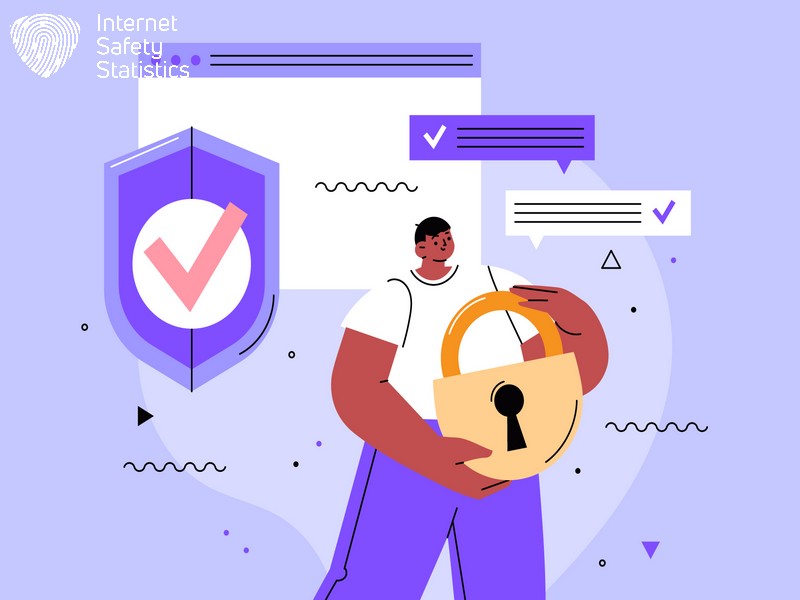
The future involves utilising biometric and behavioural authentication to enhance security measures further. This approach moves beyond traditional passwords and incorporates unique biological or behavioural characteristics such as fingerprints, facial recognition, and voice patterns to verify a user’s identity.
By leveraging these advanced techniques, organisations can significantly bolster their security defences against unauthorised access attempts, providing a more robust layer of protection for sensitive data and systems. Employing biometric and behavioural authentication strengthens overall security and simplifies the user experience by eliminating the need to remember complex passwords.
Addressing Privacy Regulations and Data Protection
The future of online security will see a heightened focus on addressing privacy regulations and data protection. Cybersecurity professionals are expected to keep abreast of evolving regulatory landscapes, such as the General Data Protection Regulation (GDPR) in Europe and the California Consumer Privacy Act (CCPA) in the United States.
Implementing robust measures to secure personal information and sensitive data will become paramount, aligning with an increasing emphasis on user privacy and data protection across digital platforms. Adhering to these regulations will be crucial for businesses, service providers, and internet users as they navigate the complex terrain of data security.
As we delve into upcoming cybersecurity trends, it’s imperative to understand how these developments intersect with privacy regulations and data protection. Amidst growing concerns over online privacy breaches, individuals can anticipate greater efforts to safeguard their personal information across various digital channels.
Developing the Cybersecurity Workforce
Soon, the demand for well-trained cybersecurity professionals is set to soar. As AI and machine learning technologies play a pivotal role in threat detection and prevention, acquiring relevant skills will be crucial. Cybersecurity professionals must stay proactive in keeping abreast of emerging trends and technological advancements to mitigate evolving cyber threats effectively.
Equipping oneself with the necessary expertise in cybersecurity will be essential for addressing the ever-changing landscape of online security. With an increasing focus on automation and advanced technologies, staying ahead of the curve will be imperative to safeguard against imminent cybersecurity risks. Moving forward, a human-centric approach to training and development within the cybersecurity workforce is paramount for ensuring robust defence against cyber attacks.
Prioritising Human-Centric Security
Prioritise human-centric security to safeguard against evolving cyber threats. Embrace user-focused approaches, emphasising awareness and education to mitigate insider risks. Implement multi-factor authentication and real-time monitoring for early threat detection, ensuring tailored individual protection.
Incorporate biometric and behavioural authentication methods to fortify security measures. Leverage AI and automation technologies to improve user experience while bolstering protection. Stay proactive in addressing the constantly evolving cybersecurity landscape, reflecting a commitment towards safeguarding individual users in an increasingly digital world.
Automated Threat Hunting
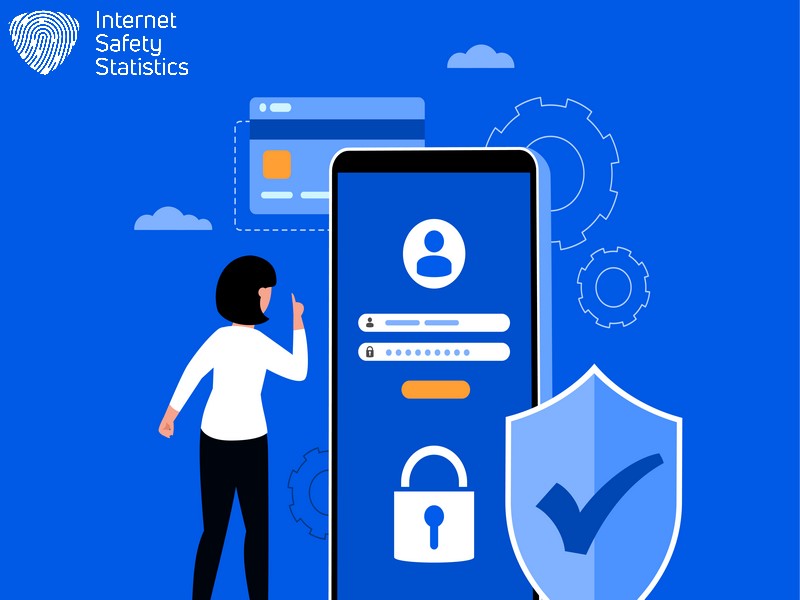
AI and machine learning are revolutionising how cybersecurity professionals detect and combat cyber threats. Automated threat hunting is gaining prominence as a proactive approach to identifying potential risks before they escalate.
Organisations can continuously monitor networks for suspicious activities by leveraging AI-powered tools, enabling early threat detection and swift response. This emerging trend in cybersecurity empowers businesses to stay one step ahead of evolving cyber threats, ensuring a secure online environment for users.
With the increasing sophistication of cyber attacks, embracing automated threat hunting is crucial for fortifying digital defences and safeguarding sensitive data from malicious actors.
International Collaboration in Cybersecurity
Amid the evolving cybersecurity landscape, international collaboration is increasingly crucial in combating global cyber threats. With cyber-attacks transcending borders, collective efforts and information sharing among nations are essential to identify, thwart, and prosecute malicious actors.
This collaborative approach aims to establish a unified front against cyber warfare while promoting the exchange of best practices and intelligence across borders. Joining forces with other countries allows for a more comprehensive understanding of emerging trends and facilitates the development of coordinated strategies to counter cyber threats effectively.
Efforts in international cooperation can lead to enhanced cybersecurity measures globally. Countries can align their regulatory frameworks and policies by working together, fostering a cohesive response to cybersecurity challenges.
Tackling Regulatory and Legal Challenges
Transitioning from international collaboration in cybersecurity addressing regulatory and legal challenges is crucial for ensuring comprehensive online security. Staying abreast of privacy regulations and data protection laws will be imperative in the coming years, especially as technology evolves rapidly.
As cyber threats become more sophisticated, individuals and organisations need to navigate the legal landscape effectively while also understanding the critical role that cyber insurance can play in mitigating potential risks. Embracing ethical hacking practices and bug bounty programs could further bolster security measures, thus fostering a safer digital environment for all users.
Importance of Cyber Insurance
Cyber insurance is becoming increasingly crucial in safeguarding individuals and businesses from the financial repercussions of cyber attacks. As the threat landscape continues to evolve, having a robust cyber insurance policy can provide invaluable support in covering the costs associated with data breaches, ransomware attacks, and other cyber incidents.
This type of insurance offers financial protection and access to expert resources for managing and mitigating potential cybersecurity risks. In today’s digital age, where cyber threats are prevalent across various industries, including healthcare, finance, and retail, having cyber insurance can offer peace of mind and help mitigate potential financial losses.
Utilising AI for Security Testing
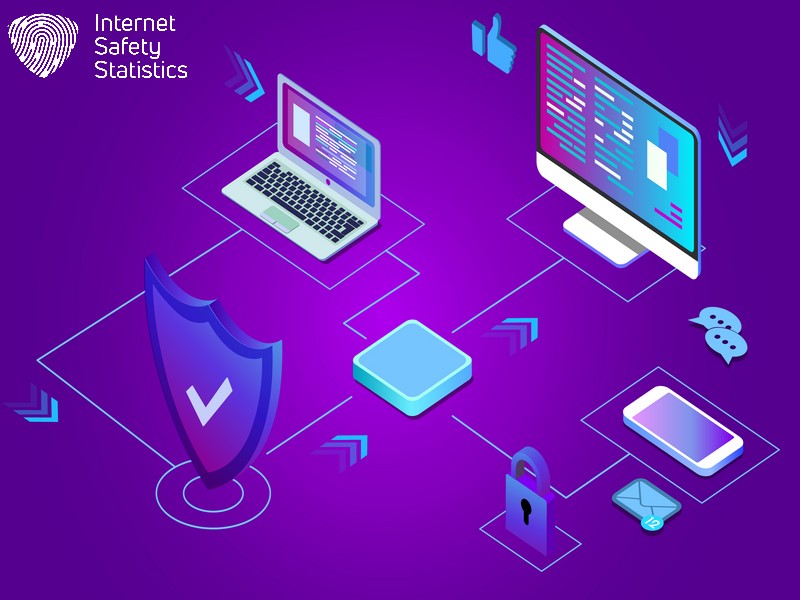
AI is revolutionising security testing by identifying vulnerabilities and predicting potential threats, bolstering the defence against cyber attacks. Its advanced algorithms can analyse vast data, enabling early threat detection and proactive mitigation strategies. AI will play a crucial role in safeguarding online platforms as technology evolves.
Incorporating AI into security testing enables a proactive approach to identifying emerging cyber threats, providing users with an added layer of protection. Through machine learning technologies, AI can assist in threat detection and prevention, helping to stay ahead of evolving cybersecurity risks.
Preparing for Incidents and Recovery
Preparing for incidents and recovery involves developing proactive strategies to respond to cyber threats. Engaging in regular threat hunting and implementing real-time monitoring can aid in early threat detection, enabling swift incident response. Strengthening identity and access management also plays a crucial role in mitigating the impact of potential security breaches, ensuring that unauthorised access is promptly addressed.
Additionally, nurturing a well-trained cybersecurity workforce is essential for effective incident response and recovery. Providing comprehensive training on handling security incidents equips professionals with the necessary skills to address emerging cyber threats efficiently.
Securing Smart Cities and Critical Infrastructure
Securing smart cities and critical infrastructure is crucial as the world becomes more connected. AI-powered cyber threats and technological advancements underline the need for robust security measures to protect against potential attacks.
Implementing advanced cybersecurity solutions will be essential to safeguard not only our data but also the critical infrastructure that supports our daily lives. With the increasing integration of IoT devices in smart cities, ensuring these systems are secure from cyber threats will be imperative.
The future of cybersecurity involves addressing emerging trends, including those impacting smart cities and critical infrastructure. Individuals and organisations need to stay vigilant and informed about evolving cyber risks to prevent potential disruptions or attacks on essential services such as transportation, energy, and healthcare infrastructures.
Combatting AI-Powered Cybercriminals
AI-powered cybercriminals pose a significant threat to online security, with the potential to launch sophisticated and targeted attacks. By leveraging AI and machine learning technologies, these cybercriminals can exploit vulnerabilities and swiftly adapt their tactics, making it crucial for cybersecurity measures to evolve to combat these advanced threats.
Implementing robust AI-powered security solutions is essential in detecting and mitigating the intricate techniques used by these malicious actors. Parents must be aware of the growing trend of AI-powered cyber threats when considering their family’s online safety. Office workers should prioritise staying informed about emerging cybersecurity trends related to AI-driven attacks to protect sensitive company data.
Encouraging Ethical Hacking and Bug Bounty Programs
In addition to combating AI-powered cybercriminals, encouraging ethical hacking and bug bounty programmes can strengthen the overall cybersecurity posture. Organisations can proactively identify and address potential security loopholes before malicious actors exploit them by incentivising skilled individuals to find and report vulnerabilities. This approach fosters a culture of responsible disclosure and empowers the wider community to contribute positively towards enhancing online security.
Embracing ethical hacking and bug bounty programmes aligns with the growing emphasis on collaboration between cybersecurity professionals and the broader internet user community. Leveraging ethical hackers’ collective knowledge and skills can lead to the swift identification and resolution of security flaws, ultimately safeguarding digital assets from potential threats.
The Future Implications of Emerging Technologies on Cybersecurity
Emerging technologies such as AI, ML, and automation will significantly impact cybersecurity, requiring the implementation of zero-trust security models and quantum computing-resistant cryptography to ensure secure 5G networks and address IoT security.
Adhering to privacy regulations and nurturing a well-trained cybersecurity workforce will be crucial in this evolving landscape.
Impact of AI, ML, and automation
AI, ML, and automation are shaping the future of cybersecurity by advancing threat detection and response capabilities. These technologies enable real-time monitoring for early threat detection and provide proactive security measures. AI and ML are pivotal in identifying potential risks and vulnerabilities enhancing overall security posture. Automation streamlines security processes, allowing for swift responses to evolving cyber threats.
Integrating AI, ML, and automation into cybersecurity strategies presents significant opportunities to bolster defences against emerging cyber threats. Leveraging these technologies can empower organisations to stay ahead of increasingly sophisticated attacks while minimising the potential impact of security breaches.
Implementing Zero-Trust Security Models
Transitioning from the impact of AI, ML, and automation to implementing zero-trust security models signals a critical shift in cybersecurity strategies. Zero trust security relies on not automatically trusting anything inside or outside an organisation’s perimeters, emphasising strict access controls and continuous monitoring.
This approach ensures that every user or device is verified before being granted access to sensitive data or systems, greatly reducing the risk of insider threats and unauthorised access attempts. With cyber threats becoming more sophisticated, implementing zero-trust security models is crucial for enhancing protection against potential breaches.
Adopting zero-trust security models represents a proactive measure in safeguarding digital assets by challenging traditional notions of network perimeters and assumptions about internal network traffic.
This approach aligns with future trends in cybersecurity as it emphasises constant verification at various stages rather than relying solely on perimeter defences, addressing vulnerabilities raised by advanced attack vectors such as nation-state actors and supply chain attacks.
Importance of Quantum Computing-Resistant Cryptography
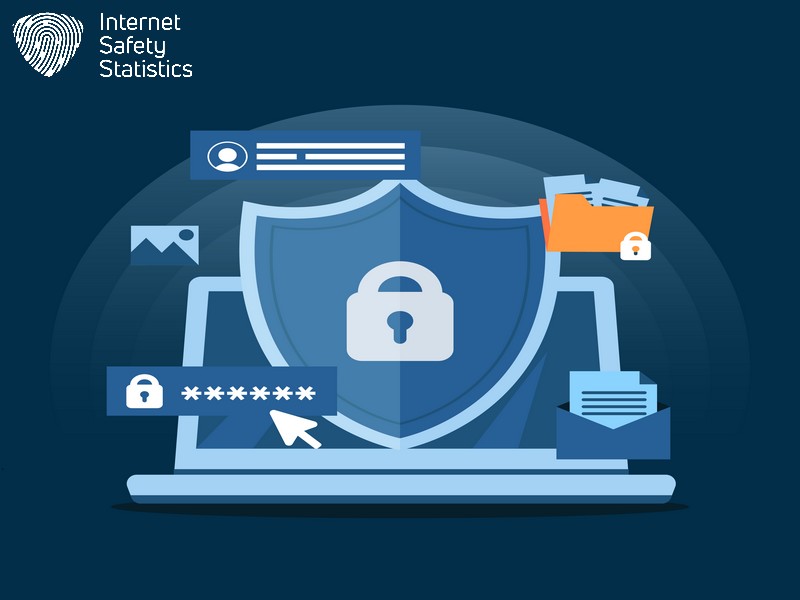
Quantum computing-resistant cryptography is crucial in safeguarding sensitive data from the potential threats of quantum computers. As quantum computing advances, traditional encryption methods may become susceptible to decryption, making secure communication and information protection vulnerable.
The importance of adopting quantum-resistant cryptographic algorithms lies in creating a robust defence against future cyber attacks enabled by quantum computation capabilities. Understanding and implementing these advanced cryptographic techniques can ensure that confidential information remains secure and protected as technology evolves.
Looking ahead, cybersecurity professionals must remain vigilant and stay abreast of emerging trends, such as developing and implementing quantum computing-resistant cryptography to fortify online security measures.
Ensuring Secure 5G Networks
Transitioning from the importance of quantum computing-resistant cryptography to ensuring secure 5G networks, internet users and office workers must understand the significance of safeguarding 5G networks against potential cybersecurity threats.
As 5G technology becomes more prevalent, it’s essential to prioritise security measures that protect against unauthorised access and potential vulnerabilities. With the rapid expansion of IoT devices and interconnected systems, securing 5G networks is vital in preventing cyber-attacks that could exploit these connections. By staying informed about emerging trends in 5G security and implementing robust encryption protocols, individuals can contribute to creating a safer online environment.
As we navigate the era of 5G connectivity, both parents and office workers must recognise the need for proactive measures in securing these advanced networks. Staying vigilant against potential vulnerabilities in 5G infrastructure will be key in mitigating cyber threats while enjoying the benefits of high-speed connectivity.
Addressing IoT Security
Transitioning from ensuring secure 5G networks to addressing IoT security is paramount in safeguarding connected devices and smart technology. As the integration of IoT devices continues to expand, so do the associated security risks. With an increase in AI-powered cyber threats and the evolution of cloud security measures, it becomes essential for individuals and organisations to prioritise securing their IoT devices against potential attacks.
As we move forward into the future of online security, staying vigilant about protecting IoT devices will be crucial. AI and machine learning technologies are identified as one of the biggest trends in cybersecurity, indicating that proactive measures must be taken to address vulnerabilities within IoT networks and devices.
Adhering to Privacy Regulations and Data Protection
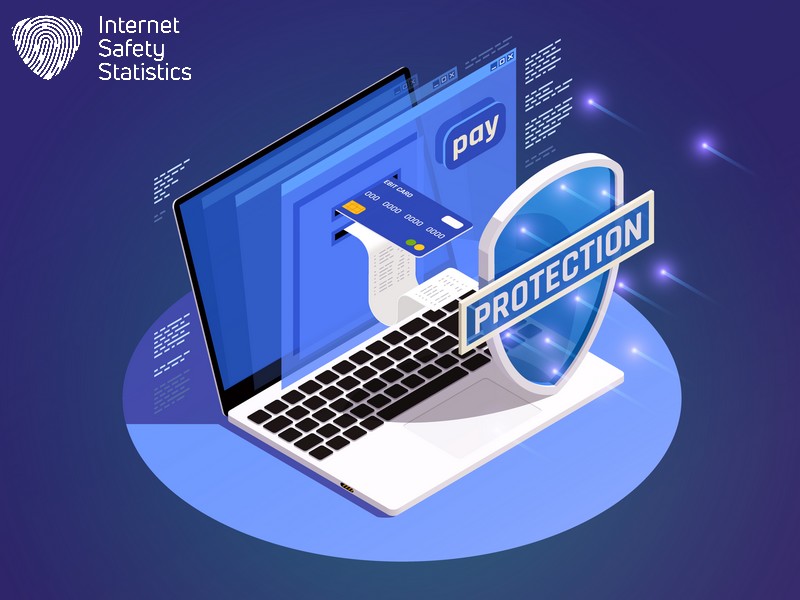
Adherence to privacy regulations and data protection will be pivotal in safeguarding personal information from cyber threats. As technology evolves, parents, office workers, and internet users must prioritise compliance with privacy laws and best practices for data security.
Embracing these regulations can help mitigate the risk of data breaches, ensuring that sensitive information remains secure. With AI-powered threats on the rise, individuals and organisations must stay vigilant in upholding privacy measures as part of a proactive approach to online security.
As we delve into the upcoming cybersecurity trends, all stakeholders must understand how enhanced privacy regulations and robust data protection efforts are crucial in combating evolving cyber threats. Strengthening our focus on these aspects will be fundamental in fortifying our digital defences against potential breaches and attacks.
Nurturing a Well-Trained Cybersecurity Workforce
Transitioning from the critical importance of adhering to privacy regulations and data protection, it is vital to recognise the urgency of nurturing a well-trained cybersecurity workforce.
As we look ahead, predicting AI-powered threats and zero-trust architecture as imminent cybersecurity risks in the next five years, we must prioritise equipping individuals with the necessary skills and knowledge to combat these evolving challenges.
With AI and machine learning technologies anticipated to play a significant role in future cybersecurity, empowering professionals with advanced training will be crucial in effectively leveraging these tools for threat detection and mitigation.
Utilising Automated Threat-Hunting
The adoption of automated threat hunting shapes the future of online security. Cybersecurity professionals increasingly embrace this proactive approach to detect and address threats in real-time, allowing for swift action against potential breaches. Using advanced technologies such as AI and machine learning, organisations can automate the threat detection and response process, enabling them to stay one step ahead of evolving cyber threats.
This trend reflects the ongoing shift towards leveraging automation for enhanced security measures, providing a vital layer of defence in an increasingly complex digital landscape. Implementing automated threat hunting allows organisations to strengthen their cybersecurity posture by continuously monitoring suspicious activities without relying solely on manual intervention.
Strengthening International Collaboration
As cybersecurity threats continue to evolve, it is becoming increasingly evident that a unified approach at an international level is essential for effective defence. The future of online security will rely heavily on strengthened collaboration between countries to share information, intelligence, and best practices in combating cyber threats.
International cooperation offers the potential to create a united front against cybercriminals and malicious actors across borders, reinforcing global resilience against emerging cybersecurity risks. Fostering international collaboration in cybersecurity enhances the collective ability to identify and respond to sophisticated threats and facilitates the sharing expertise and resources for proactive security measures.
Identifying the Importance of Cyber Insurance

In the ever-evolving landscape of online security, identifying the importance of cyber insurance is crucial. With the increasing sophistication of cyber-attacks and diverse attack vectors, businesses and individuals risk substantial financial losses due to data breaches and other cybersecurity incidents.
Cyber insurance provides a safety net by covering expenses related to data recovery, legal fees, and potential liability claims in a cyber incident. This proactive measure can safeguard against unforeseen financial implications and help mitigate the impact of cyber threats. As cybersecurity advances, understanding the significance of cyber insurance becomes paramount for protecting personal and professional assets from potential digital threats.
Implementing AI for Security Testing
AI is now being used to enhance security testing, which is crucial for safeguarding against evolving cyber threats. By leveraging AI capabilities, security teams can analyse vast amounts of data to identify vulnerabilities and potential risks more efficiently. This proactive approach allows for the early detection and mitigation of potential security breaches before they escalate, helping to ensure robust protection for sensitive information and systems.
AI-driven security testing also enables a dynamic response to emerging threats by continuously adapting and refining security measures. As cyber-attacks become increasingly sophisticated, embracing AI technology in security testing becomes essential for staying one step ahead of malicious actors.
Ensuring Security for Smart Cities and Critical Infrastructure
Implementing robust cybersecurity measures for smart cities and critical infrastructure is crucial to safeguard against emerging threats. With the increasing interconnectivity of urban systems, such as transportation, energy, and public safety, it becomes essential to fortify defences against potential cyber-attacks that could disrupt daily operations and compromise citizen safety. Advanced technologies like AI and machine learning can aid in proactive threat detection and real-time monitoring to thwart malicious activities targeting these vital networks.
Additionally, prioritising collaborative efforts between government agencies, private sectors, and cybersecurity professionals will be instrumental in developing comprehensive security frameworks tailored specifically for the unique challenges posed by smart cities and critical infrastructure.
Integrating multi-layered security protocols and continuous risk assessment will bolster resilience against evolving cyber threats faced by smart cities and critical infrastructure. By embracing innovative solutions while adhering to stringent privacy regulations and data protection standards, stakeholders can work towards a future where digital advancements coexist harmoniously with impenetrable security measures.
Addressing the Threat of AI-Powered Cybercriminals
AI-powered cybercriminals significantly threaten online security, leveraging advanced technologies to hack into systems and exploit vulnerabilities. As AI continues to evolve, these cybercriminals are expected to use it for more sophisticated attacks, making it essential for individuals and organisations to stay vigilant and proactive in fortifying their digital defences.
Understanding the potential impact of AI-powered threats is crucial in developing strategies to thwart these evolving cybersecurity risks. Moving forward, cybersecurity professionals and internet users must adapt swiftly to combat the growing menace posed by AI-powered cybercriminals.
In conclusion, the future of online security is set to undergo significant shifts in the next few years. Cybersecurity professionals must proactively identify and address emerging trends, leveraging AI and machine learning technologies for threat detection and prevention. The evolving landscape presents challenges and opportunities, emphasising the importance of staying ahead of cyber threats while embracing innovative security measures. With a focus on automation, international collaboration, and human-centric security approaches, the future implications of emerging technologies will shape the constantly evolving nature of online security.
FAQs
1. What are the key trends in online security for the future?
Key trends to watch in the future of online security include more sophisticated cybersecurity measures to combat new cyber attack trends.
2. How can I protect myself against future cyber-attacks?
Stay up-to-date with current cyber attack trends and implement strong, evolving security practices to shield yourself from potential threats.
3. Will there be new types of cyber attacks in the future?
Yes, as technology advances, anticipate novel types of cyber attacks that will challenge current online security measures.
4. Is it important to monitor future online security trends?
Absolutely! Monitoring and adapting to emerging trends is crucial for robust protection against ever-evolving cyber threats.
